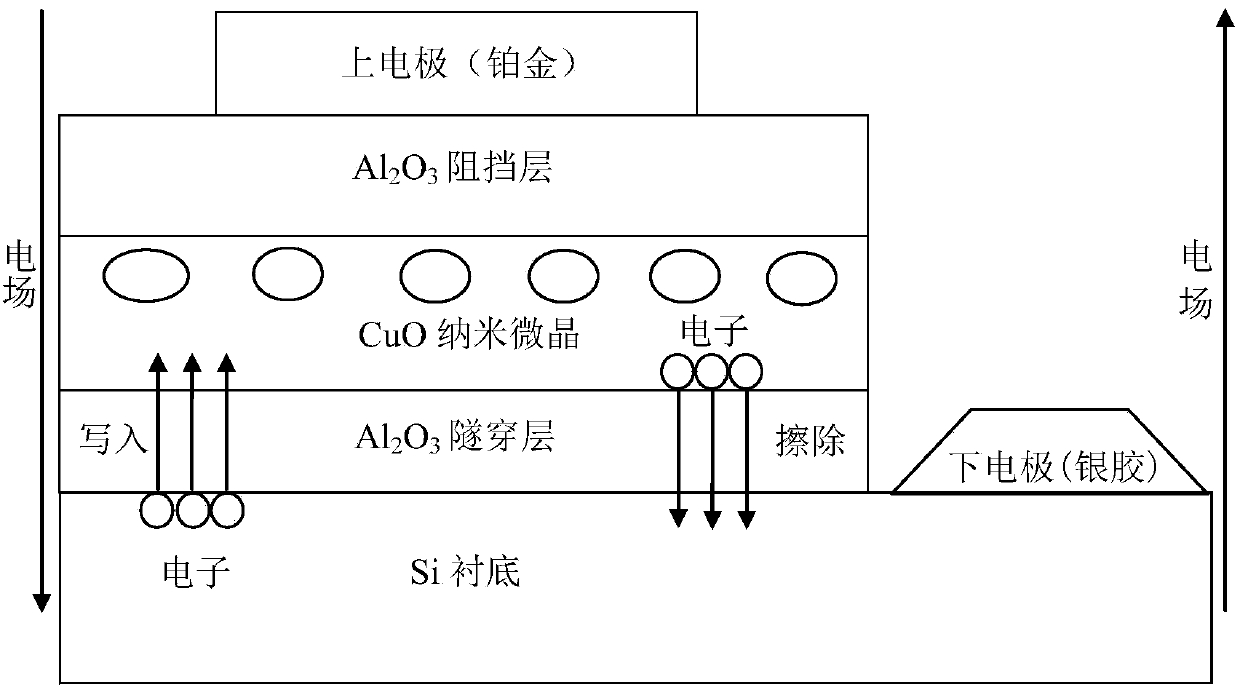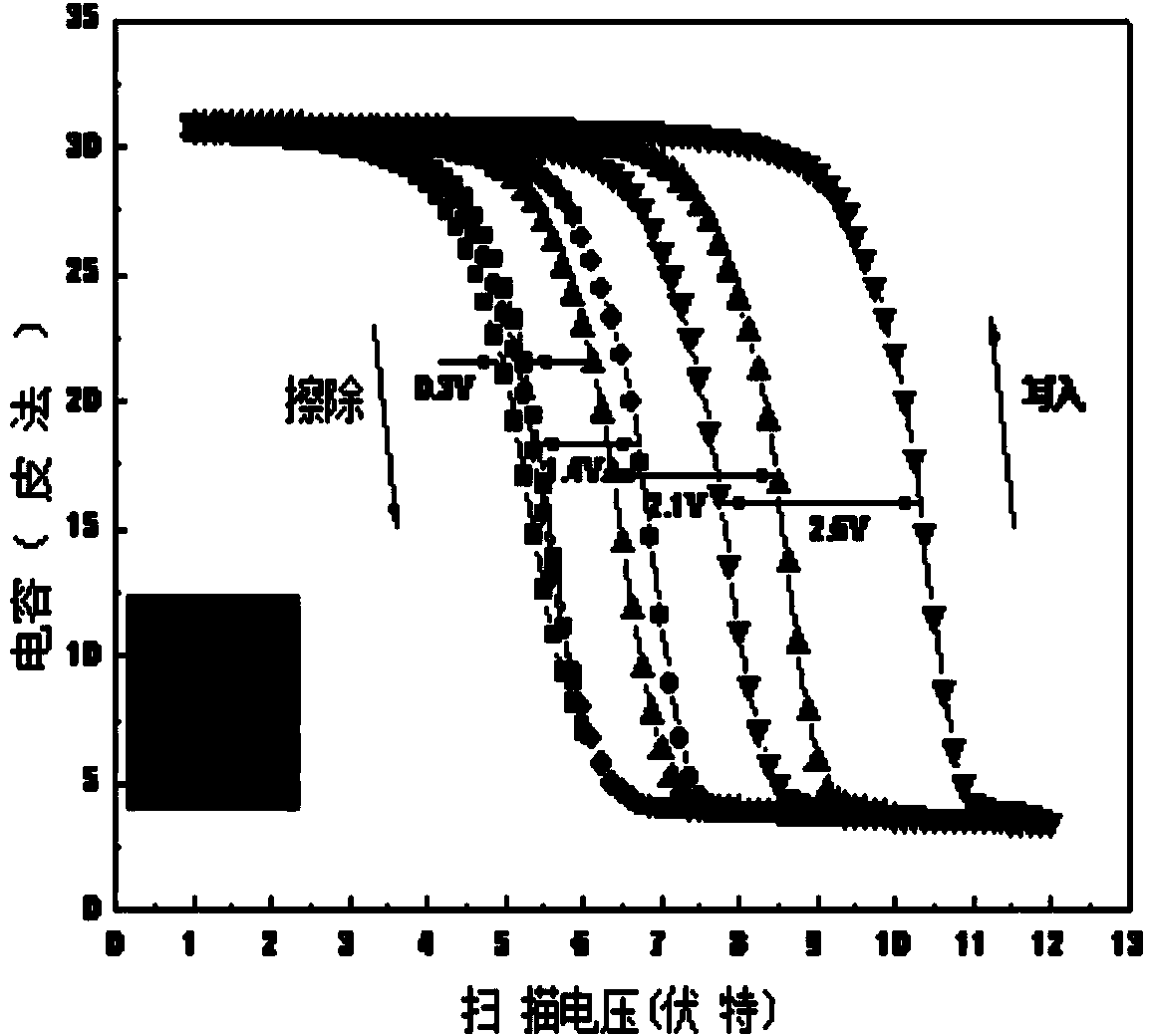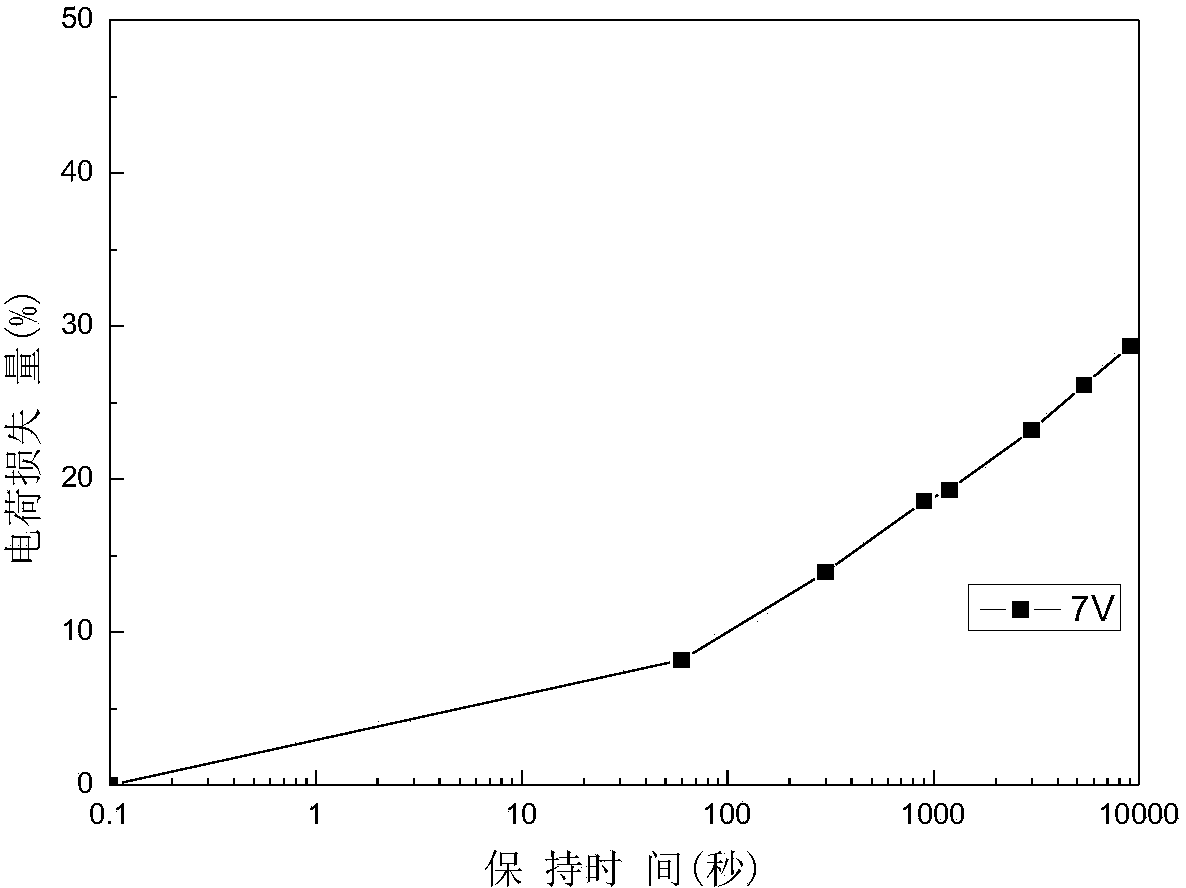Storage materials and application storage materials in nonvolatile charge trapping type memory device
A charge-trapping, non-volatile technology, applied in the field of microelectronic materials, can solve problems such as leakage current, difficulty in meeting the miniaturization requirements of memory, and charge loss of polysilicon floating gates, and achieve the effect of storing large amounts of information
- Summary
- Abstract
- Description
- Claims
- Application Information
AI Technical Summary
Problems solved by technology
Method used
Image
Examples
Embodiment 1
[0024] a) Select P-type Si as the substrate, and use ALD (vacuum atomic layer deposition or vacuum coating) technology to grow Al on the surface with a thickness of about 2-10nm after cleaning. 2 o 3 as a tunneling layer;
[0025] b) Growth of (CuO) with uniform composition on the tunneling layer by magnetron sputtering X (Al 2 o 3 ) 1-x Thin film as storage layer;
[0026] c) Re-grow a layer of Al with a thickness of about 15nm on the storage layer by ALD 2 o 3 as a barrier;
[0027] d) Annealing the above-prepared sample at a temperature lower than the melting point of CuO causes CuO nanocrystals to precipitate from the storage layer and be covered by Al 2 o 3 Surrounded by an amorphous parent phase, the CuO nanocrystals are used as a storage medium; the annealing is carried out in a rapid annealing furnace, the annealing time is 20-60S, the annealing atmosphere is a nitrogen atmosphere, and the annealing temperature is 200±15°C; e) re-annealing after annealing Pla...
Embodiment 2
[0028] Embodiment 2: Based on the Si substrate, the preparation process of the CuO nano-microcrystal-based non-volatile charge-trapping memory device is specifically as follows:
[0029] a) Put the Si substrate into an appropriate amount of acetone, ultrasonically clean it for 10 minutes, then ultrasonically clean it with deionized water for 10 minutes to clean off the remaining substances on the surface of the substrate, and then put the substrate into the diluted hydrofluoric acid solution Immerse in the medium for about 30 seconds to remove surface oxides, then use deionized water to ultrasonically clean for 5 minutes to wash off the residual hydrofluoric acid, blow dry with high-purity nitrogen, and then put it into the atomic layer chemical vapor deposition chamber to deposit a film.
[0030] b) Al(CH 3 ) 3 As a metal source, ozone is a source of oxygen. Deposit Al with a thickness of 3nm 2 o3 as a tunneling layer.
[0031] c) Then put the sample into the magnetron sp...
PUM
 Login to View More
Login to View More Abstract
Description
Claims
Application Information
 Login to View More
Login to View More - R&D
- Intellectual Property
- Life Sciences
- Materials
- Tech Scout
- Unparalleled Data Quality
- Higher Quality Content
- 60% Fewer Hallucinations
Browse by: Latest US Patents, China's latest patents, Technical Efficacy Thesaurus, Application Domain, Technology Topic, Popular Technical Reports.
© 2025 PatSnap. All rights reserved.Legal|Privacy policy|Modern Slavery Act Transparency Statement|Sitemap|About US| Contact US: help@patsnap.com



